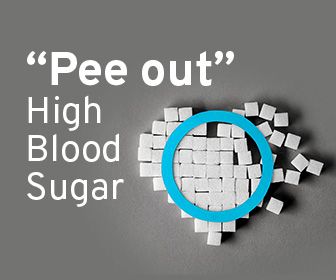Headaches are one of the most common health complaints, but their causes go far beyond dehydration, stress, or lack of sleep. Many hidden triggers, from dietary imbalances to environmental toxins, can contribute to persistent headaches. If painkillers barely help or headaches keep coming back, it’s time to look deeper.
Many of the foods we eat, the environments we live in, and even our daily habits could be silently fueling headaches. Instead of masking the pain, finding and eliminating the root causes can lead to real, lasting relief.
1. Weather Shifts & Barometric Pressure Changes
Some people notice headaches before a storm, on humid days, or during seasonal shifts. Barometric pressure changes can cause blood vessels in the brain to expand or contract, leading to pain. Those sensitive to pressure changes may feel migraines intensify before rainstorms or extreme heat.
Cold fronts and humidity spikes can alter oxygen levels and increase headache susceptibility.
High altitudes or sudden elevation changes (such as flying or hiking) can trigger headaches due to pressure shifts.
Dry air from heaters or air conditioners can dehydrate nasal passages, leading to sinus headaches.
Tracking weather patterns may help identify whether pressure shifts contribute to headaches.
2. Hidden Food Sensitivities & Additives
Certain foods trigger headaches, even when they seem harmless. Unlike food allergies, sensitivities can cause delayed reactions, making it harder to pinpoint the cause.
Common headache-inducing foods include:
Aged cheeses – Contain tyramine, which affects blood vessels.
Processed meats – Loaded with nitrites and preservatives that can dilate blood vessels.
Artificial sweeteners (aspartame, sucralose) – Disrupt neurotransmitters, leading to headaches.
MSG (monosodium glutamate) – A known headache trigger in processed foods and restaurant meals.
Alcohol (especially red wine and beer) – Contains histamines and sulfites, which can trigger migraines.
An elimination diet can help identify food triggers. If headaches regularly follow meals, keeping a food journal can reveal patterns.
3. Blue Light Exposure & Digital Eye Strain
Hours spent staring at screens—phones, laptops, and TVs—can overstimulate the nervous system and strain the eyes, leading to headaches.
Blue light disrupts sleep cycles, which increases migraine risk.
Screen glare and prolonged focus strain eye muscles, causing tension headaches.
Blinking less while looking at screens dries out the eyes, leading to discomfort.
Using blue light filters, adjusting screen brightness, and taking frequent breaks can reduce screen-related headaches.
4. Brain Freeze from Cold Foods
Eating or drinking something ice-cold too quickly—like an ice cream cone or a frozen smoothie—triggers a sudden headache known as brain freeze. This happens because the rapid cooling and rewarming of blood vessels in the mouth send pain signals to the brain.
To prevent brain freeze:
Eat cold foods slowly instead of gulping them down.
Let ice-cold drinks warm slightly in your mouth before swallowing.
Brain freeze headaches are temporary, but for those who get migraines, they can sometimes trigger a more prolonged headache.
5. Jaw Tension & TMJ Dysfunction
Many headaches originate from the jaw, teeth, or misalignment in the temporomandibular joint (TMJ). Clenching the jaw, grinding teeth at night (bruxism), or dental misalignment can create tension that radiates into the temples.
Stress and anxiety make jaw clenching worse.
Chewing gum excessively strains jaw muscles.
Dental misalignment forces the jaw into unnatural positions, leading to headaches.
Seeing a dentist or TMJ specialist can help address jaw-related headaches. Mouth guards, jaw exercises, and relaxation techniques often provide relief.
6. Sinus Infections and Chronic Nasal Congestion
Sinus pressure from allergies, infections, or environmental irritants can trigger headaches in the forehead, cheeks, and behind the eyes.
Mold exposure in homes can contribute to chronic sinus inflammation, causing recurrent headaches.
Dairy sensitivity can increase mucus production, worsening sinus-related headaches.
Neti pots or saline sprays help clear nasal passages, reducing pressure.
Steam inhalation with eucalyptus or peppermint opens airways and eases congestion.
7. Nutrient Deficiencies That Weaken Brain Function
Deficiencies in essential vitamins and minerals disrupt nerve function, blood flow, and energy production—factors that can lead to chronic headaches.
Magnesium – Crucial for muscle relaxation and brain function. Low levels are strongly linked to migraines.
Vitamin D – Deficiency contributes to inflammation and can increase headache frequency.
B Vitamins (B2, B6, B12, Folate) – Support energy production and nervous system health.
Electrolytes (Sodium, Potassium, Calcium) – Imbalances cause dehydration-related headaches.
Eating a nutrient-dense diet rich in greens, healthy fats, and lean proteins can prevent deficiencies that contribute to headaches.
8. Gut-Brain Connection & Histamine Intolerance
The gut and brain are deeply connected. An imbalanced gut microbiome or food intolerances can increase inflammation, leading to headaches.
Leaky gut allows inflammatory compounds to enter the bloodstream, impacting brain function.
Dysbiosis (bad gut bacteria overgrowth) can lead to neurological symptoms like headaches and brain fog.
High-histamine foods like aged cheeses, cured meats, and fermented foods can cause headaches in those with histamine intolerance.
Supporting gut health with probiotics, prebiotics, and a clean diet can reduce inflammation-related headaches.
9. Blood Sugar Swings & Electrolyte Imbalances
Unstable blood sugar levels can cause headaches due to glucose fluctuations affecting brain function.
Skipping meals triggers blood sugar crashes, leading to headaches.
Eating high-carb, low-protein meals causes glucose spikes and crashes.
Caffeine dependence worsens blood sugar instability, leading to withdrawal headaches.
Balancing blood sugar with protein, healthy fats, and fiber at every meal helps prevent energy crashes and headaches.
Breaking the Headache Cycle: Getting to the Root Cause
Painkillers may provide temporary relief, but they don’t address the underlying reasons headaches occur. Many triggers go unnoticed—whether it’s hidden food sensitivities, nutrient deficiencies, jaw tension, or environmental toxins.
Instead of relying on medications, pay attention to patterns. When do headaches occur? What foods, activities, or stressors precede them? Small lifestyle changes—like correcting posture, reducing inflammation, or balancing hormones—can create a massive impact.
Headaches aren’t random discomfort. They’re signals from the body that something is off. By listening to those signals and making the right adjustments, long-term relief becomes possible.





